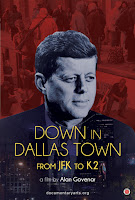the traveler's resource guide to festivals & films
a FestivalTravelNetwork.com site
part of Insider Media llc.
Reviews
Off-Broadway Play Review—David Adjmi’s “Stereophonic”
- Details
- Parent Category: Film and the Arts
- Category: Reviews
- Published on Monday, 04 December 2023 23:33
- Written by Kevin Filipski
.jpg) |
| The cast of Stereophonic (photo: Cherice Parry) |
Armenian National Philharmonic Orchestra Plays Carnegie Hall, Presented by CLASSIC MUSIC TV
- Details
- Parent Category: Film and the Arts
- Category: Reviews
- Published on Monday, 04 December 2023 14:22
- Written by Jack Angstreich

Photo from Classic Music TV.
At Carnegie Hall, on the evening of Wednesday, November 15th, I had the pleasure of attending a splendid concert—presented by Classic Music TV—featuring the Armenian National Philharmonic Orchestra under the distinguished direction of Edward Tophjan.
The program opened brilliantly with an exhilarating realization of three magnificent selections from the celebrated 1953 ballet score, Spartacus, by the Armenian composer Aram Khachaturian—this year is the 120th anniversary of his birth. The first excerpt, “Variations of Aegina and Bacchanalia,” is sparkling and dynamic, while the second, “Adagio of Spartacus and Phrygia,” begins lyrically but builds to a more emphatic statement, concluding serenely. The final section, “Dance of Gaditanian Maidens and Victory of Spartacus,” is evocative and mysterious, increasing in excitement and appropriately closes triumphantly.
An admirable soloist, Sergey Khachatryan, then joined the artists for an impressive account of the same composer’s Violin Concerto in D minor from 1940—a work that, like the music for Spartacus, deserves a more prominent place in the repertory. The initial, ambitious Allegro con fermezza is energetic—even agitated at times—but with meditative moments and it has both an exotic quality as well as, especially in the cadenza,avant-gardeelements. The Andante sostenuto that follows is reflective and melodic—seemingly with Eastern folk motifs—but is not without intensity and ends quietly. The Allegro vivace that completes the piece is restless, even turbulent at times, but with sprightly passages and it finishes dramatically.
The second half of the event was also memorable, comprised of a compelling rendition of the marvelous Symphony No. 2 of Sergei Rachmaninoff, whose sesquicentennial anniversary is also this year. The main body—marked Allegro moderato—of the complex first movement—which has a solemn, Largo introduction that becomes more soulful—has a largely passionate, even urgent, character but sometimes is almost bucolic and the Allegro molto that succeeds it is propulsive, playful and suspenseful but with emotional passages. The famous, haunting primary theme of the Adagio that ensues is impossibly beautiful while the Allegro vivace finale is exuberant with some subdued episodes. A very enthusiastic ovation was rewarded with a delightful encore: the famous Waltz from the 1944 Suite drawn from the incidental music Khachaturian wrote for the Mikhail Lermontov play,Masquerade.
November '23 Digital Week III
- Details
- Parent Category: Film and the Arts
- Category: Reviews
- Published on Friday, 01 December 2023 02:46
- Written by Kevin Filipski
Film Festival Roundup—DOCNYC 2023
- Details
- Parent Category: Film and the Arts
- Category: Reviews
- Published on Monday, 20 November 2023 19:10
- Written by Kevin Filipski
 |
| Fanny—The Other Mendelssohn |
 |
| How to Come Alive With Norman Mailer |
 |
| Psychedelicized—The Electric Circus Story |
 |
| Rainbow Warrior |
 |
| Angel Applicant |
Comic Lizz Winstead created The Daily Show and cofounded the liberal radio network Air America, but she would probably say her greatest contribution is her pro-choice Abortion Access Front, which Ruth Leitman’s No One Asked You explores in meaningful and even amusing detail. Winstead and her cohorts have kept their sense of humor as well as their sense of proportion, and Leitman shows them using everything in their arsenal to ensure that, in the face of mounting defeats culminating in the overturn of Roe v. Wade, women—and not the (mainly) men in power—retain control over their own bodies.
 |
| The Trials of Alan Dershowitz |
More Articles...
Newsletter Sign Up
















